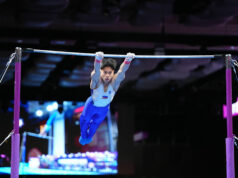The third round of any given major championship is tagged “Moving Day” for a reason: It’s when hopefuls make significant strides and become contenders for the hardware heading into the Final 18. And, for the most part, the fireworks are set up by astute course organizers who latch on to the right risk-reward formulas; the intent is to spur boldness and creativity, with the proper use of otherworldly skill sets leading to tangible benefits. Yesterday, sadly, was an exception to the rule.
Granted, the United States Open has long been the toughest test in the sport. Of all the tournaments on the Grand Slam rota, it’s the one that installs patience as a virtue and points to prudence as the better part of valor. That said, US Golf Association (USGA) officials take pains to convey the impression that the courses they manage for their events are eminently difficult but fair. Often, they succeed in doing so, bringing about challenges that go down the wire and keep observers on the edge of their seats. In some cases, they go overboard in their avowed desire to protect par, resulting in blood-red marks on the leaderboard and players and spectators alike complaining about the carnage.
The third round of the 2018 US Open was, by all accounts, the latter case. So penal were conditions on Shinnecock Hills that even USGA heads, Chief Executive Mike Davis included, agreed that the test was “probably too tough.” Certainly, it was an extraordinary admission from an organization that takes pride in treading the fine line between exactitude and inequity. “You were seeing shots that were well played and not rewarded,” he conceded.
Indeed, and examples of how Sisyphean the endeavor of keeping in step with yesterday’s layout could be found at every turn. Shinnecock Hills was already extremely demanding in the morning, when dampness made fairways and greens relatively soft; it became downright brutal in the afternoon, when shots off the tee and on approach seemed to be rejected by grounds and bounced any which way, and when delicately struck putts powered past holes.
Ask erstwhile leader Dustin Johnson, who appeared well on the road to an implosion before he managed to regain his bearings on the back nine. And even then, he remained subject to the course’s whims; on the last hole, his tap to get a 17-foot birdie attempt in the hole ran a ridiculous eight feet past — and, of course, he missed the comebacker. Ask two-time major winner Zach Johnson, who noted in frustration that the USGA “lost the golf course.” Ask six-time runner-up Phil Mickelson, who celebrated his birthday with an 81 that included a John Daly-like deliberate swipe at the ball while it was still moving on the fourth green.
Given the reaction, it’s no wonder that the USGA has pledged to make conditions more benign today. Whether it moves the pendulum to the other end or just closer to the middle remains to be seen. In any case, whoever winds up on top will have clearly done so not merely by competing, but by surviving.
Anthony L. Cuaycong has been writing Courtside since BusinessWorld introduced a Sports section in 1994.



